
Starting June 1st, 2023 Our warehouse fee will be $0.65/cubic foot per month
In effort to lower the warehouse storage fee during inflation, we have went narrow aisle racking.This construction took us four months but the project is finally completed. With narrow aisle racking, we are able to drop storage by 24%.We as partners will go through this inflation together.
02/27/2024
Navigating the intricate landscape of shipping stands as a pivotal yet intricate facet in the realm of online business operations. Balancing the considerations of costs and logistics in dispatching orders to customers is a complex task, compounded by the crucial requirement of ensuring the proper documentation accompanies each shipment. Neglecting this aspect may lead to significant delays or the unwelcome notification of a "Package Stuck in Customs" for cross-border consignments.
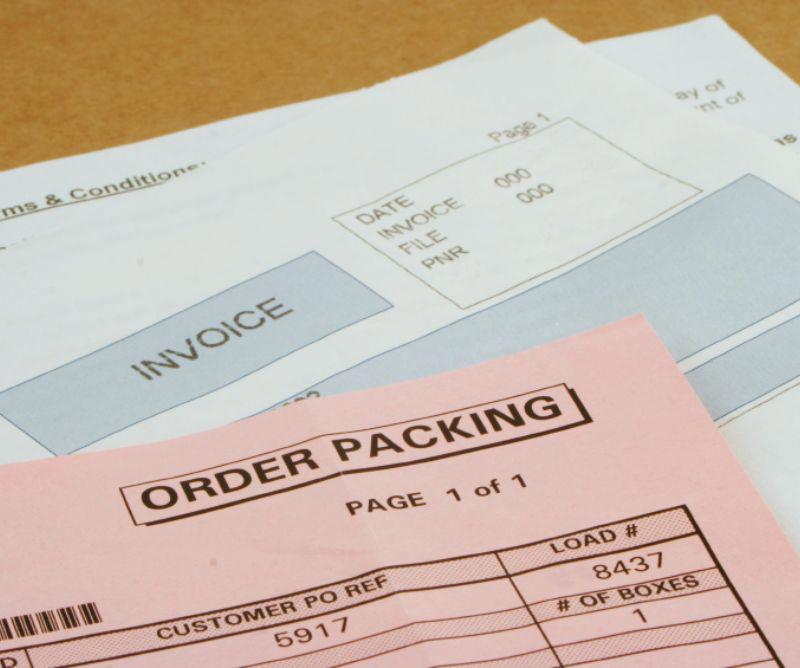
Mitigating potential shipping complications hinges on ensuring that all packages are equipped with the requisite documents. The question arises: What documents are indispensable for this purpose? This guide delves into precisely that inquiry.
Continue reading to gain comprehensive insights into the fundamental shipping documents crucial for both domestic and international shipments, including those classified as hazardous.
Shipping documents, as the moniker implies, comprise the essential paperwork vital for the seamless transportation of goods from one location to another. Comprising relevant records, forms, and certificates, they furnish comprehensive details about the shipped item. This encompasses particulars such as the item's description and specifications, quantity, price, ship date, delivery address, and chosen shipping method.
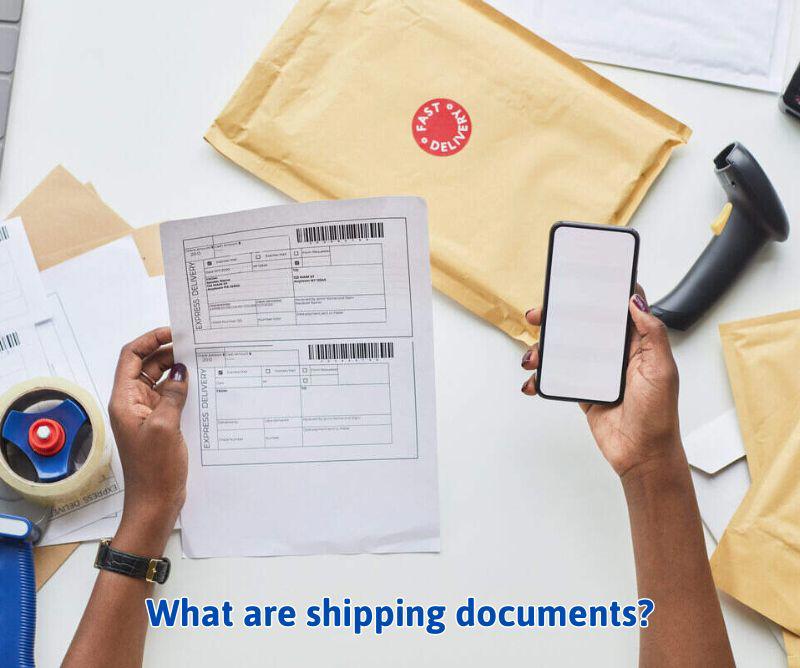
The specific documents required can vary, contingent on factors such as the shipping method, delivery destination, and nature of the goods. However, fundamental documents for most packages encompass waybills, commercial invoices, packing lists, and certificates of origin.
Given that these documents furnish crucial information about the shipped goods, they play a pivotal role in ensuring timely and accurate deliveries. They assist courier services in determining the optimal route and executing efficient delivery procedures.
Moreover, these documents assume added importance in international shipments, ensuring adherence to the import regulations of the countries through which the package transits. Inclusion of all requisite documents with accurate information serves to expedite the customs clearance process, facilitating swift international deliveries.
See some more related articles:
👉 What Is Declared Value? Overview of Logistics Terminology
👉 Delivered Duty Paid (DDP) Means in Shipping and Import
👉 EXW and FOB meaning in Incoterms: KEY difference and the BEST choice
Navigating the complex landscape of international shipping demands an acute awareness of diverse laws and regulations across countries. Consequently, the requisite documentation for both import and export activities exhibits considerable variation. In the majority of instances, the following set of documents proves indispensable for seamless international shipping.
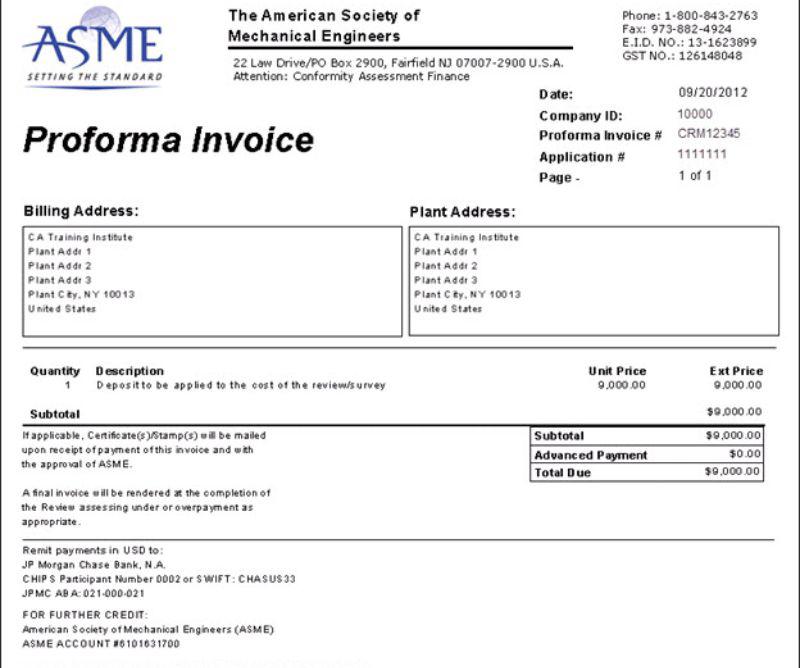
A proforma invoice, serving as an estimated invoice or preliminary bill, is dispatched to international prospects before an actual purchase. It functions akin to a pre-purchase quote, aiding recipients in organizing essential finances and documentation, including import licenses.
Critical details within a proforma invoice encompass:
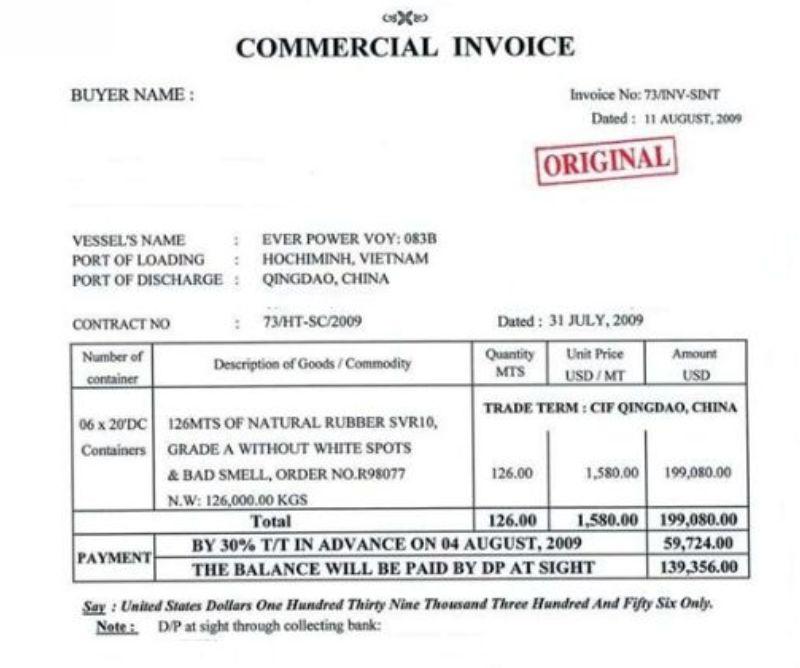
The commercial invoice, typically created through an invoice generator, serves as the substantiation of a transaction's sale and is a requisite document for all international shipments. While it bears resemblance to the proforma invoice, it may incorporate additional particulars like the order number and PO number.
These commercial invoices closely resemble standard invoices but necessitate the inclusion of extra information crucial for customs clearance. Key details encompass comprehensive information about the buyer and seller, particulars about the freight forwarder, banking and payment information, shipping line details, item description, quantity, country of origin, HS code, item value, total weight, and shipment terms.
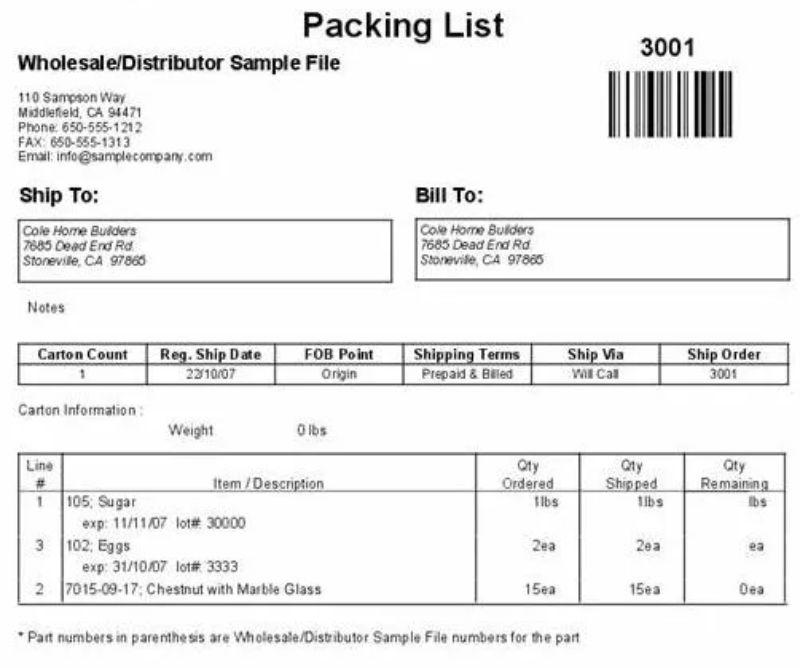
A crucial component in international shipments, the export packing list provides a detailed inventory of all goods within a shipment, accompanied by pertinent information for each item. This document serves as the foundation for issuing other critical paperwork, such as a bill of lading and a letter of credit. It plays a vital role in customs clearance and can prove instrumental in resolving disputes between the shipper and the carrier.
Key details encompassed in the export packing list include the order date, shipping address, and contact information. The list itemizes the shipped items and those that were out-of-stock, specifying the quantity of each item. Essential identifiers, such as SKU or UPC numbers, PO number or slip number, dimensions, weight, packaging type, and safety measures, contribute to the comprehensive nature of this document.
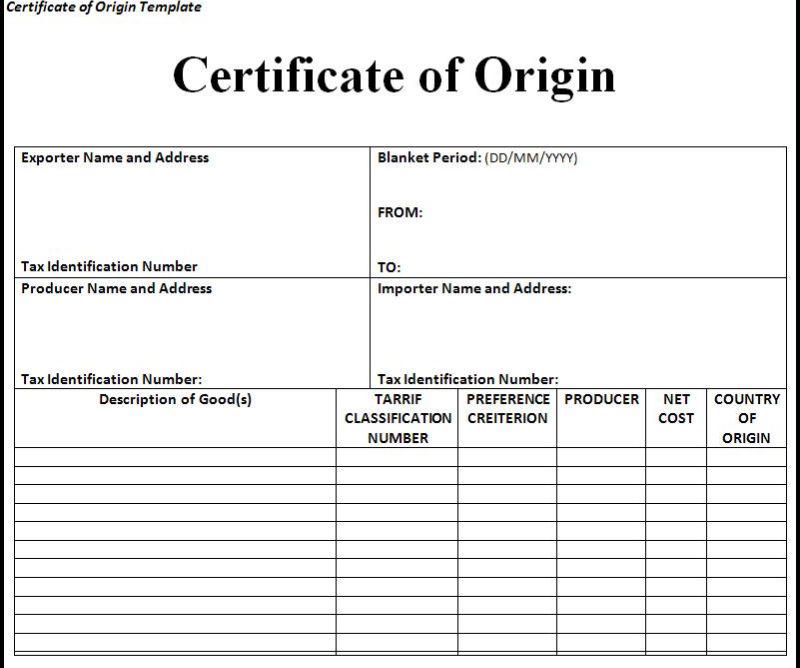
International shipments typically necessitate a certificate of origin to disclose the origin of the items. Compliance with the importing country's rules is crucial, and these certificates need validation from the export country’s consulate office or the chamber of commerce.
Essential details on certificates of origin comprise the shipper's name and address, buyer's name and address, exporting carrier, country of manufacture, number of packages, date of export, item description, quantity/unit of measure, weight, and a signature from authorized personnel.
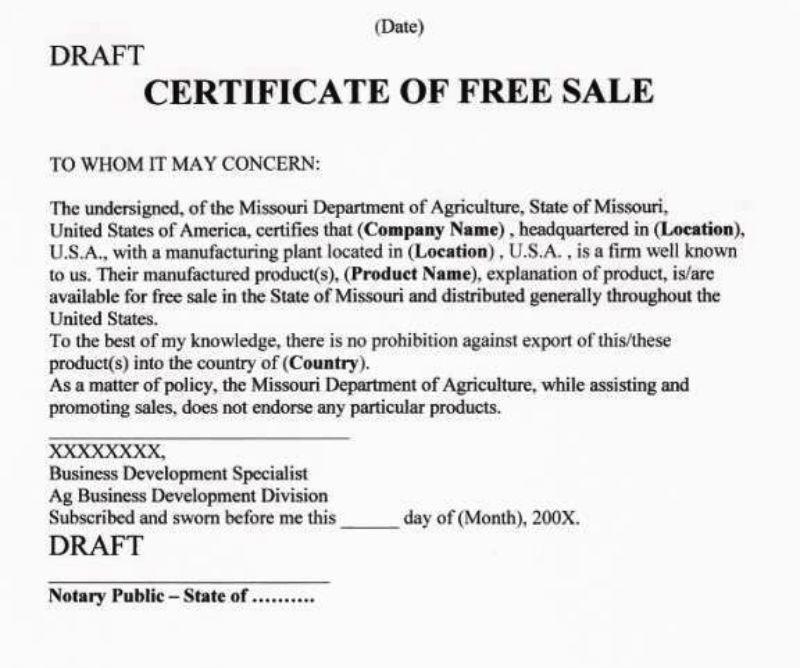
Also known as a certificate of export, this crucial document acts as proof that the merchandise being transported is lawfully sold or distributed in the open market and faces no restrictions in its country of origin. A certificate of free sale signifies that the product has gained approval from pertinent regulatory bodies and is fit for export. Such documentation is particularly essential for various product categories including cosmetics, foodstuffs, medical equipment, and biologics.
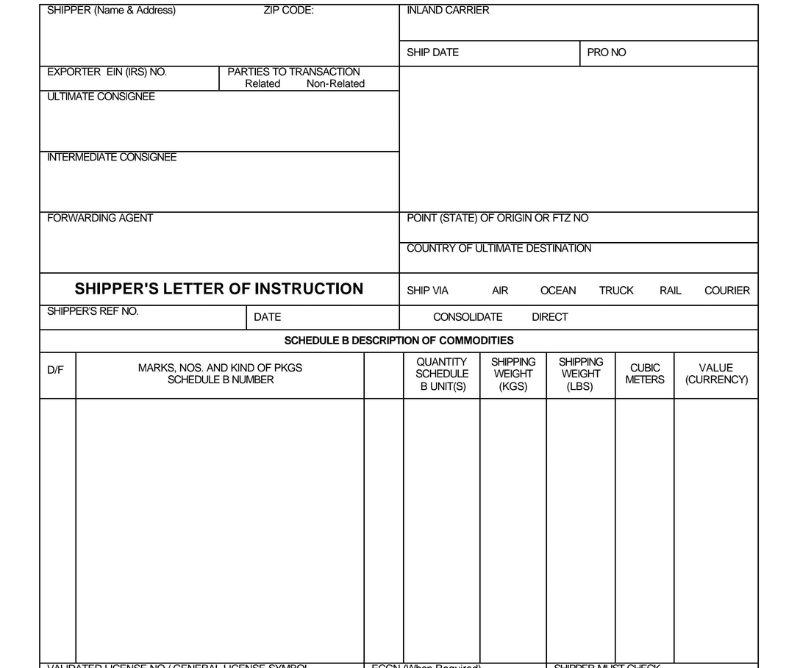
This comprehensive document encompasses precise directives for the efficient transportation of international shipments. Typically disseminated to freight forwarders, it comprises essential information such as:
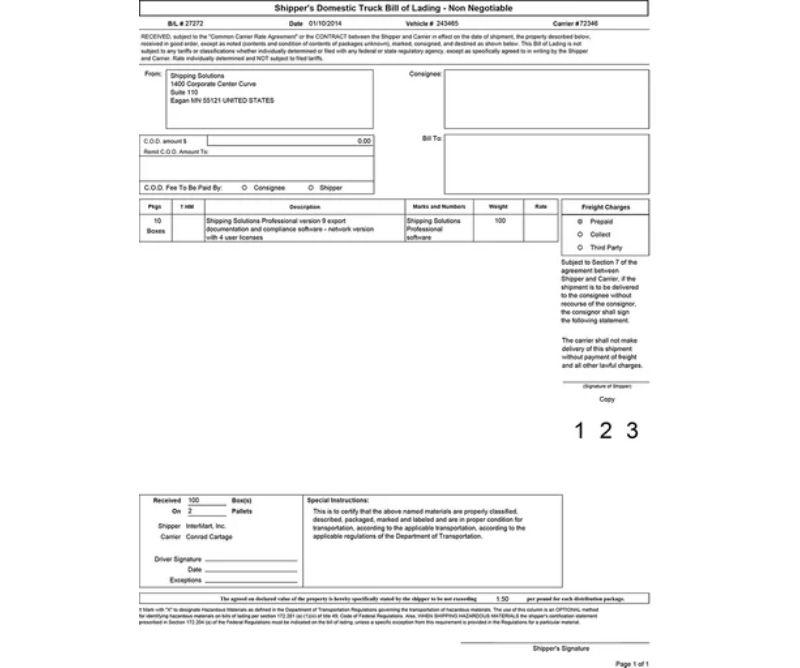
The inland bill of lading functions as a formal agreement for the transportation of goods, directed towards the shipping carrier instead of the buyer. This legal document outlines the specifics of the goods' transport, serving as proof of pickup. Comprehensive information, including item description, value, origin country, destination, and transportation terms, may be incorporated in the inland bill of lading.
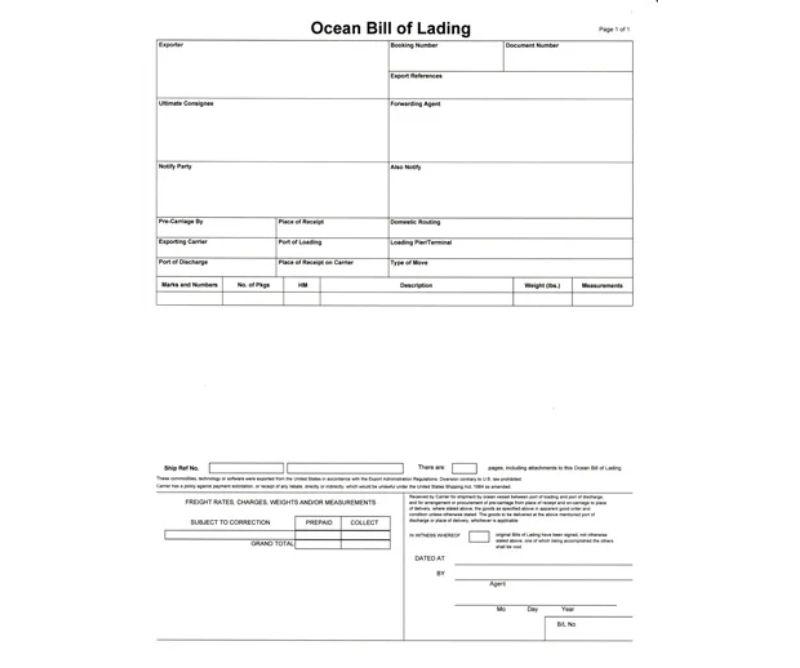
Dubbed as the essential paperwork for goods transported over global waters, this document functions as a pivotal agreement between the seller or exporter and the shipping carrier. Its primary purpose is to guarantee the successful delivery of the product to the buyer while ensuring compensation for the seller. Among the critical information encompassed within the ocean bill of lading are particulars like item description, quantity, commercial value of the shipment, destination, routing instructions, and the specified type of packaging.
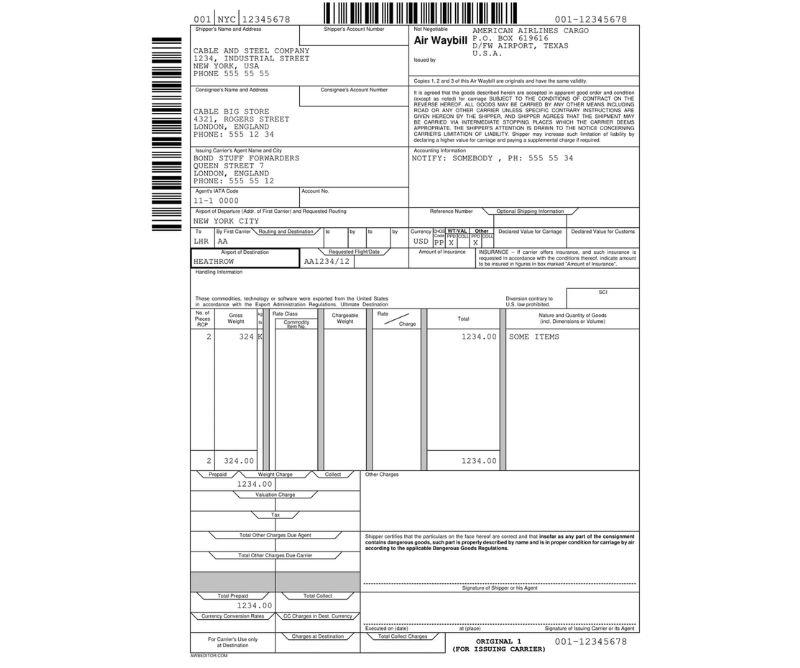
In the realm of air cargo transportation, a crucial document known as the air waybill serves as the contractual foundation between the seller and the carrier. This non-negotiable agreement stands as an official acknowledgment of goods received by the airline carrier upon their arrival at the designated airport.
Key elements encompassed in an air waybill consist of essential details such as the shipper's name, address, and account number, alongside corresponding information for the consignee. Additionally, the document includes crucial particulars like the air waybill number, departure and destination airports, flight date, declared value of the shipment, itemized details of the goods, and a comprehensive breakdown of charges owed to the agent or carrier.
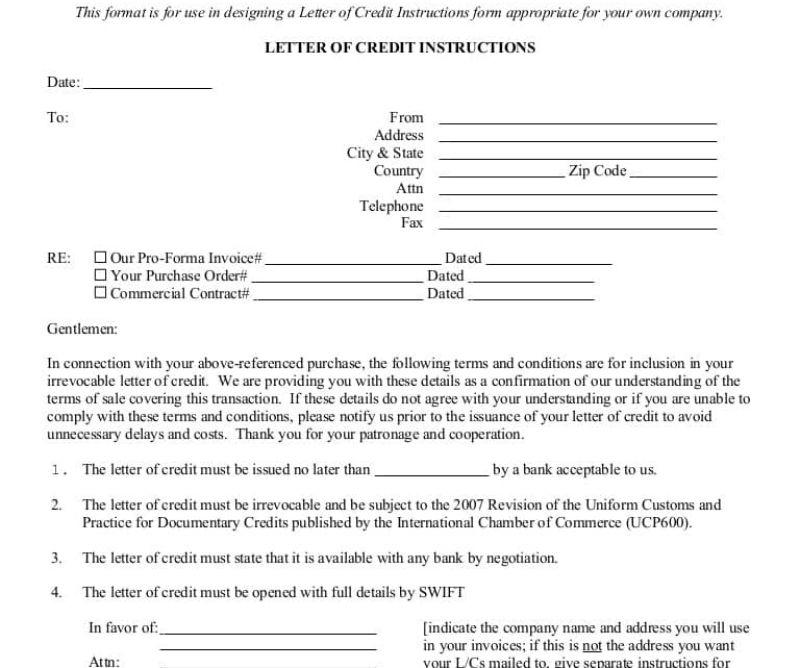
A widely embraced method of facilitating global financial transactions, it stands out as a formal and legally binding mode of payment. Its inherent nature renders it irrevocable by default, signifying a commitment to payment made by the bank to the seller on behalf of the importer or seller.
Navigating domestic shipping proves simpler than its international counterpart. To facilitate seamless operations, three crucial shipping documents are commonly required.
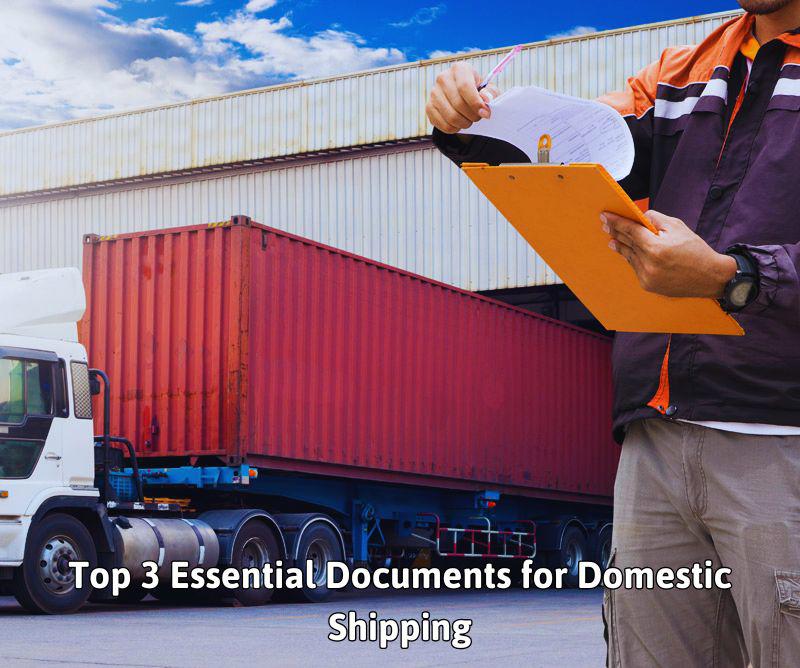
The Bill of Lading, commonly referred to as BOL, serves as a crucial transportation agreement between the carrier and the sending business. It plays a pivotal role in verifying the reception of the goods slated for shipping and necessitates the signature of an authorized representative on the carrier's behalf.
Essential components that a BOL must encompass typically comprise the origin and destination of the shipment, BOL number, specifics pertaining to the carrier or transportation company, the mode of transportation employed, a comprehensive description of the shipped goods, and the agreed-upon shipment terms.
A crucial component of any shipment, a packing list or packing slip serves as a comprehensive breakdown of the items enclosed. This document plays a pivotal role in verifying the completeness of the shipment, confirming the reception of all items, and detecting any instances of damage.
Key details encompassed in the packing list are:
In the realm of business transactions, a commercial invoice stands as a tangible validation of a purchase, encapsulating the intricacies of the sales deal between the seller and the customer. Essential components encompass:
Navigating the realm of shipping heavy or hazardous materials presents unique challenges. Consequently, it becomes imperative to supplement the aforementioned documents with additional crucial shipping paperwork.
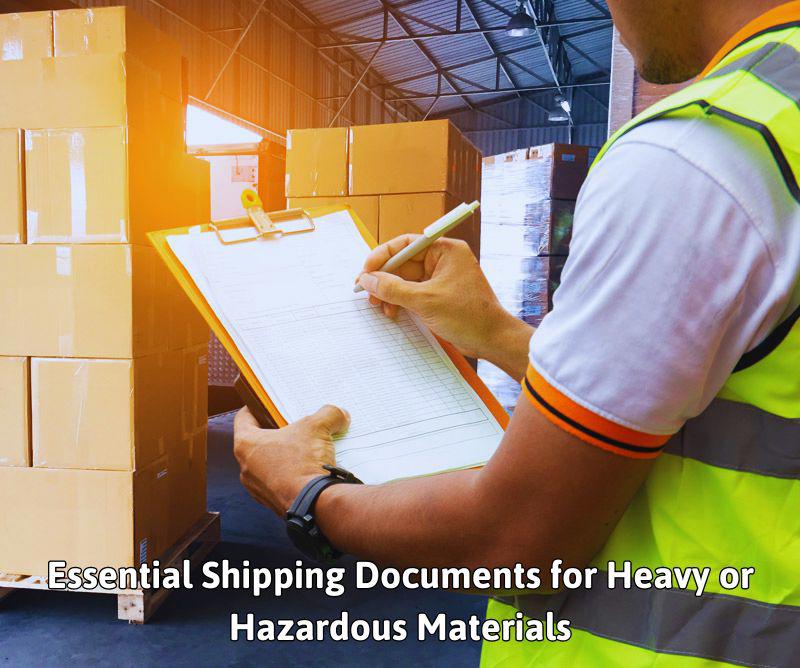
In a formal proclamation, the seller asserts compliance with relevant regulations by having appropriately packed, labeled, and declared the consignment. Key details encompass:
This document outlines the prescribed measures to be executed in the event of an emergency concerning the transportation of hazardous materials. It is imperative to encompass the following particulars:
Fundamental description and technical nomenclature of the material
Immediate health risks associated
Potential threats of fire or explosion
Immediate precautions to be undertaken in the occurrence of an incident or accident
Prompt protocol for addressing fires
Procedures for managing spills and leaks
Guidelines for preliminary first aid interventions
When opting for WCL’s fulfillment service, entrust the entire process to our expert team. Dispatch your inventory to WCL, where it awaits fulfillment upon order placement. Our team adeptly picks and packs orders, ensuring the inclusion of all essential shipping documents.
For global orders, leverage WorldCraft Logistics's expansive fulfillment network to store inventory in countries proximate to your end customer. This approach mitigates the necessity for additional documentation when catering to international clientele.
WCL extends its assistance in domestically shipping hazardous materials. Utilize the platform to designate items as "Dangerous Goods," prompting WCL to implement appropriate measures in order management.
Ready to embark on your journey with worldcraftlogistics.com? Request a quote to seamlessly connect with our dedicated team.
SEO
Digital Marketing/SEO Specialist
Simon Mang is an SEO and Digital Marketing expert at Wordcraft Logistics. With many years of experience in the field of digital marketing, he has shaped and built strategies to effectively promote Wordcraft Logistics' online presence. With a deep understanding of the logistics industry, I have shared more than 500 specialized articles on many different topics.

Education
01/05/2025

Education
02/18/2025

Education
01/01/2024

Education
08/28/2024

Education
11/13/2023